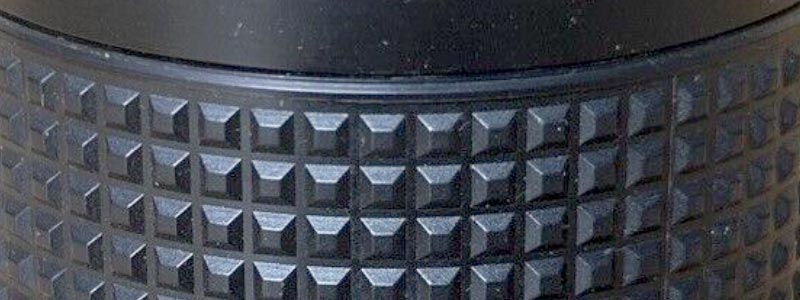Pekka Buttler, 11/2022 (Updated 08/2025)

Specifications
The table below summarises the lens’ key specifications (measurements based on pictured sample):
| Brand: | Pentacon | Lens name | Prakticar 2,8/135 MC |
| Focal length(s) 1 | 135 mm | Angle-of-view 2 | 18 ° |
| Maximum Aperture | f/2.8 | In Production | 1978 – ca 1990 |
| Lens mounts | Praktica B | Subfamily (if applicable) | –– |
| Length 3 | 89,8 mm | Diameter 4 | 62,1 mm |
| Filter ring diameter | 55 mm | Weight | 453 grams |
| Lens element count | 5 | Lens group count | 4 |
| Aperture blades (S/R/C) 5 | 6 S | Focus throw | 330 ° |
| Minimum focusing distance | 170 cms | Maximum magnification | 1:10,5 |
| Has manual aperture ring | YES | Has Manual focus ring | YES |
| Aperture mechanism type | Automatic | Aperture click stops 6 | 2-8•4•5.6•8•11•16-22 |
Further notes:
• Prakticar is the name given to all lenses designed for the Praktica B mount by Carl Zeiss Jena and Pentacon (and many other).
• Alike all Praktica B mount lenses, this lens has three electronic contacts that it uses to communicate selected aperture to the camera body and a physical aperture stop-down lever.
• This lens uses the same optical design as the Pentacon auto/electric 135/2.8 [data sheet], which in turn is a further development of the Meyer-Optik Orestor 135/2.8 [data sheet].
• The Pentacon Prakticar 135/2.8 offered a built-in, extendable hood.
• This Pentacon Prakticar 135/2.8 was offered in the Praktica B lineup alongside the Carl Zeiss Jena Prakticar 135/3.5 [data sheet].
Versions
The Pentacon Prakticar 135/2.8 was produced in two versions. The first version (as pictured above) has the typical rubber focusing ring of early Prakticar lenses.
The second version used the ‘ratio’ or rationalised design that replaced the rubber focusing ring with with a plastic grip as in the picture below.

Also, after the 1985 integration of VEB Pentacon into VEB Carl Zeiss Jena, Pentacon lenses were sold in some markets carrying the name ‘Carl Zeiss Jena’. Hence, this lens can also be found named “Carl Zeiss Jena Prakticar P 1:2.8 f=135 mm”. See more on the phenomenon of Pentacon lenses being sold as ‘Carl Zeiss Jena’ lenses here. Physically and optically it is the same lens as the Pentacon Prakticar.
After German reunification in 1990, remaining lens stock of Pentacon was sold for some time under the name Meyer-Optik (a reborn company that had taken over some of the remains of Pentacon). A sample of a Meyer-Optik 135 mm f/2.8 can be seen in this data sheet.
History of Pentacon
Pentacon – more precisely VEB Pentacon – was an East German state-owned camera and optics combinate that was very influential (also outside the East Bloc) from its inception until the demise of the East German people’s republic.
But Pentacon was not born out of thin air. Therefore any real appreciation of Pentacon – either as a camera maker or as an optics manufacturer – has to start with a back story. Read more in the JAPB company profile on Pentacon …
Adapting
This lens cannot be used natively on any current SLR or dSLRs. To use it in its native environment, you will need a Praktica B mount film body. Luckily there are a lot of those available, and many of them are still in perfect working order.
Thanks to being a fully manual lens (manual aperture, manual focus), the lens can be adapted to all mirrorless cameras using a suitable adapter. Moreover, Praktica B lenses are so uncomplicated that a simple ‘dumb adapter’ will do the job perfectly (The electronic contacts communicate only from the lens to the camera and do not impinge on adapting). However, due to that the Praktica B mount never was so successful, one should not expect special adapters (helicoid adapters, tilt/shift adapters) to be easily available. Alternatively, one can choose to daisy-chain adapters (e.g. Praktica B->Canon EF; Canon EF –> mirrorless) which not only opens up possibilities for special adapters, but also allows using speed boosters for those photographers that use smaller than full-frame sensors.
Using Praktica B lenses on dSLRs can also be an easy option, depending on which dSLR.
• Canon EF has the shortest flange focal distance among full-frame dSLR’s and Canon’s wide range of dSLRs are able to mount Praktica B lenses perfectly using a suitable adapter ring.
• With other dSLR mounts (Minolta/Sony A; Pentax K; Nikon F) the relationship between flange focal differences becomes an issue, leading to that adapting will necessitate an adapter that uses corrective optics to allow reaching infinity focus.
Footnotes
- Focal length is (unless stated otherwise) given in absolute terms, and not in Full-frame equivalent. For an understanding of whether the lens is wide/tele, see ‘Angle-of-view’. ↩︎
- Picture angle is given in degrees (based on manufacturers’ specs) and concerns the diagonal picture angle. Rule of thumb:
> 90 ° ==> Ultra-wide-angle
70–90 ° ==> Wide-angle
50–70 ° ==> Moderate wide-angle
40–50 ° ==> ‘Standard’ or ‘normal’ lens
20–40 ° ==> Short tele lens
10-20 ° ==> Tele lens
5-10 ° ==> Long tele lens
< 5 ° ==> Ultra-tele lens ↩︎ - Length is given from the mount flange to the front of lens at infinity. ↩︎
- Diameter excludes protrusions such as rabbit ears or stop-down levers. ↩︎
- S=straight; R=rounded; C=(almost)circular at all apertures. ↩︎
- Numbers equal aperture values on aperture ring; • intermediate click; – no intermediate click. ↩︎